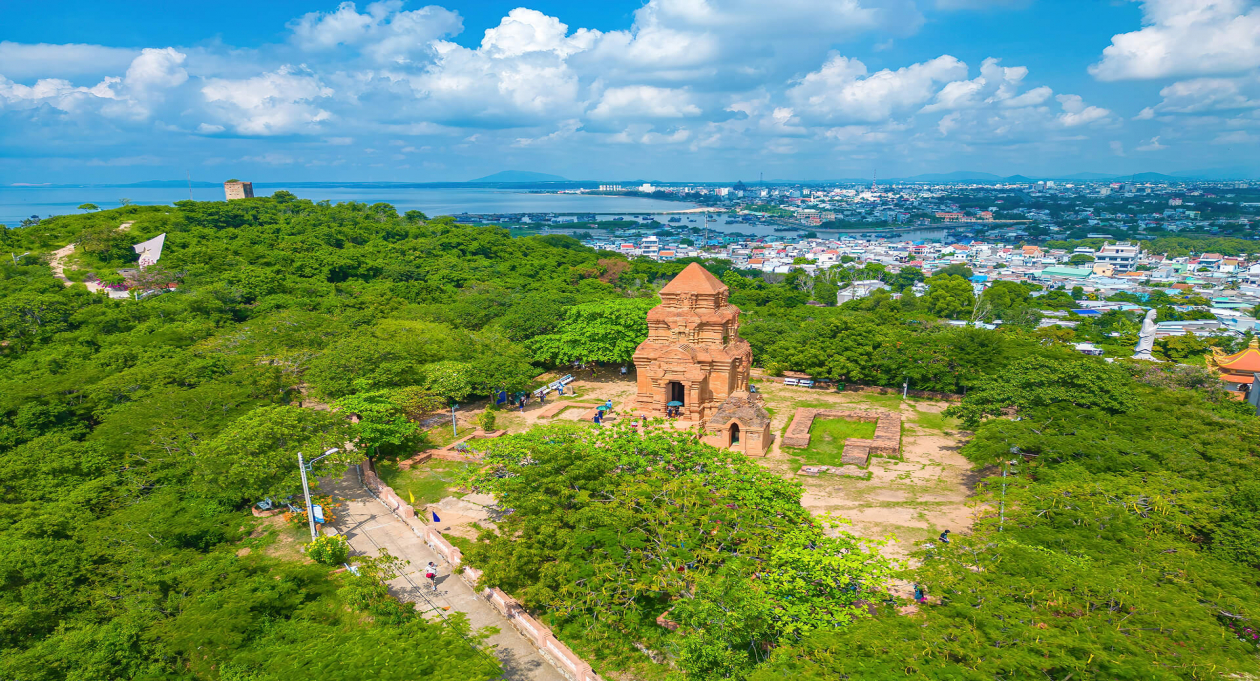Binh Thuan is a coastal province near Ho Chi Minh City, a culturally diverse region known for its beaches, agriculture, and unique ethnic architecture. Mui Ne is the best-known city in the province, a resort destination famous for beachside nightlife.
Mui Ne might get all the glory, but Binh Thuan is much more than a party beach. In fact, Binh Thuan is a fishing economy, manufacturing some of the best fish sauce in Vietnam. Phan Thiet, the capital city, produces million liters every year. At least 100 different species of fish are harvested here, cooked into a dizzying diversity of dishes. Salt fields shimmer under the sunlight. Hectares upon hectares of dragon fruit bloom in the dry climate, juicy flesh ready to burst from swollen pink rind.
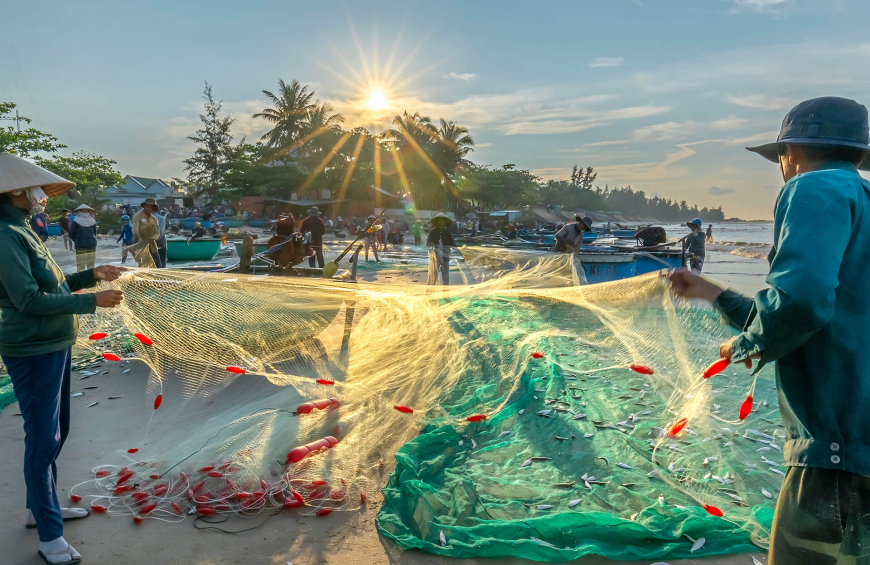
Beyond its natural wonders – or perhaps because of them – Binh Thuan is also a province of cultural diversity and ancient history. Here, antiques such as ear ornaments and intricate beads from a number of special materials including glass, agate, zircon, garnet and gold were found in the province, dating back around 3,000 years ago.
Binh Thuan Cultural History
Binh Thuan was a central part of the Cham people, a culture of explorers and traders, linguists and artisans. The Cham people have impacted the culture and history of central Vietnam massively. Back in time, the Cham people established and maintained a vast trade network across the entire Southeast Asian region, and are hugely responsible for much of the cultural interconnectedness now experienced across the region.
Kinh Vietnamese have surpassed the population of Cham people to become the majority ethnic group here, yet the Cham culture remains a force. There are many other ethnic communities in the province, including the Co Ho people and the Ra Glai, most of whom live in the mountains bordering neighboring Lam Dong Province.
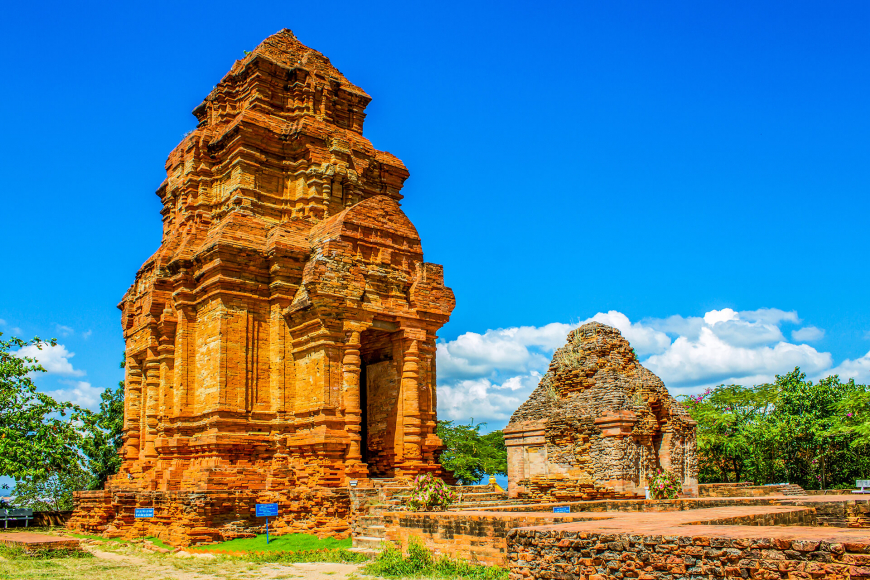
Cham Culture in Binh Thuan
The legacy of Binh Thuan’s ancient cultures lives in architectural ruins scattered throughout the province. Buddhist temples like Linh Son Truong Tho and Long Doan sit on top of Ta Cu Mountain south of Phan Thiet. Long Doan hosts the largest reclining Buddha statue in Vietnam. Such testaments to Buddhism are noteworthy given that most of Binh Thuan’s ancient architecture is devoted to Hinduism. Poshanu Tower is the most famous of these.
The Poshanu Tower complex was built more than 1,000 years ago in honor of Shiva, a Hindu god. It is thought to be one of the oldest temple complexes in all of Vietnam. The complex is a collection of three towers on nine hectares of land near Phan Thiet. A few hundred years after the three primary towers were built, the Cham added to the complex by building further towers in honor of Queen Po Sah Inu, for whom the “Poshanu” complex is now named.
The towers were built in the Hoa Lai style, a signature of Cham architecture, red bricks stacked without visible mortar. The tallest tower is 15 meters high, its eastbound entrance belonging to deities. The three floors of the tower are all decorated with carvings of Hindu figures and symbols, including altars to Shiva.
More than forgotten history, these towers are still considered an important national monument, a symbol of the living legacy of the Cham people and of Hindu culture in the region. The Poshanu Towers are still actively used for major cultural activities and festivals like the Kate, the Rija, and the Poh Mbang festivals. Cham people come to dance, drum, and pray for rain and fortune and healthy harvest. Fishermen pray for safe journeys and an abundant catch – just as their ancestors have done, at this very same temple, for so many generations.
Binh Thuan Contemporary Culture
More than 7% of the province’s population is an ethnic minority other than Kinh. Many of these communities live in the rural outskirts of the province, making a living in agriculture industries, farming fruit trees and rubber, coffee and tree nuts. Grains, especially rice, are the predominant crops throughout the region.
The handicrafts of the Cham people have survived history. Passed on through generations for many centuries, Cham pottery is still practiced in several Binh Thuan communes. The style of Cham pottery is different from other Southeast Asian cultures. Pots are simple and shapely, each manufactured by hand and with manual tools like anvils and molds rather than with turning wheels. Firing pottery is a communal activity, and pots are stained and dyed with organic paints.
These handicrafts can be seen at workshops and markets throughout the province. They are such a cultural staple of the region that UNESCO has named Cham pottery as an intangible heritage.
To witness Cham pottery, head to Go Hamlet (or Play Gok), located at Tri Duc Commune, Phan Hiep Village, is the perfect place for visitors to explore the quintessence of Cham pottery.
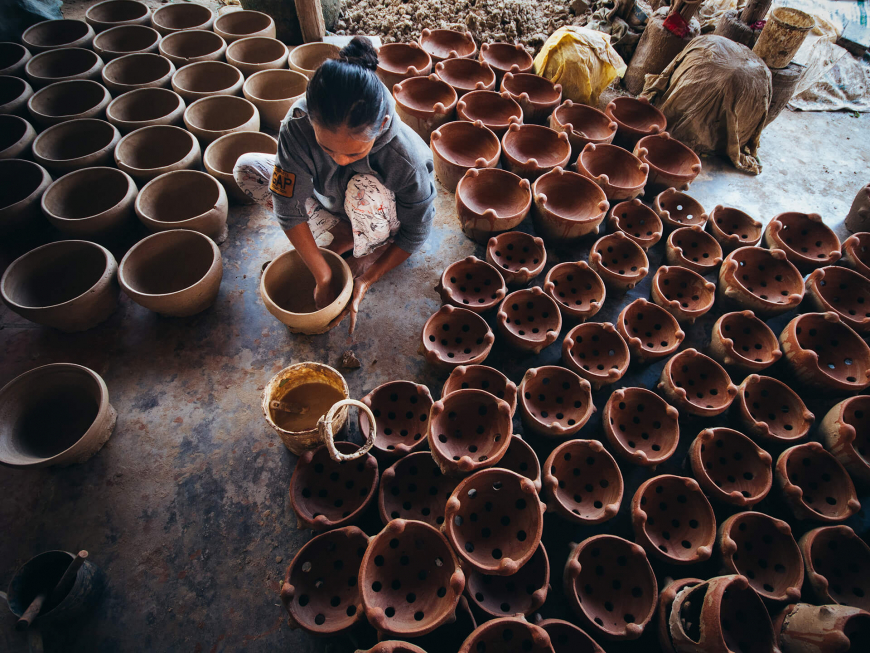
Cultural and Heritage Festivals in Binh Thuan
Binh Thuan province hosts unique folk festivals annually, celebrating a variety of belief systems of different ethnic communities. The biggest festivals tend to take place in temples or pagodas like the Poshanu Tower complex. Some have their roots in Buddhism or Hinduism; others are tied to whale worship.
The Kate Festival
The Kate Festival is by far the largest and most important folk festival in the region. It falls on the seventh month of the year on the Cham lunar calendar (about the 9th or 10th Lunar month) and lasts for 3 days, and exists to thank the ancient gods and spirits for a year of luck and to ask for growth and safety for the future. People dress up in traditional costumes and perform folk dances, play music with traditional instruments, and host ceremonies and rituals.
The Kate Festival has become one of the biggest festivals in all of Vietnam, with thousands of visitors coming every year to participate in art shows, culinary exhibitions, and traditional writing competitions.
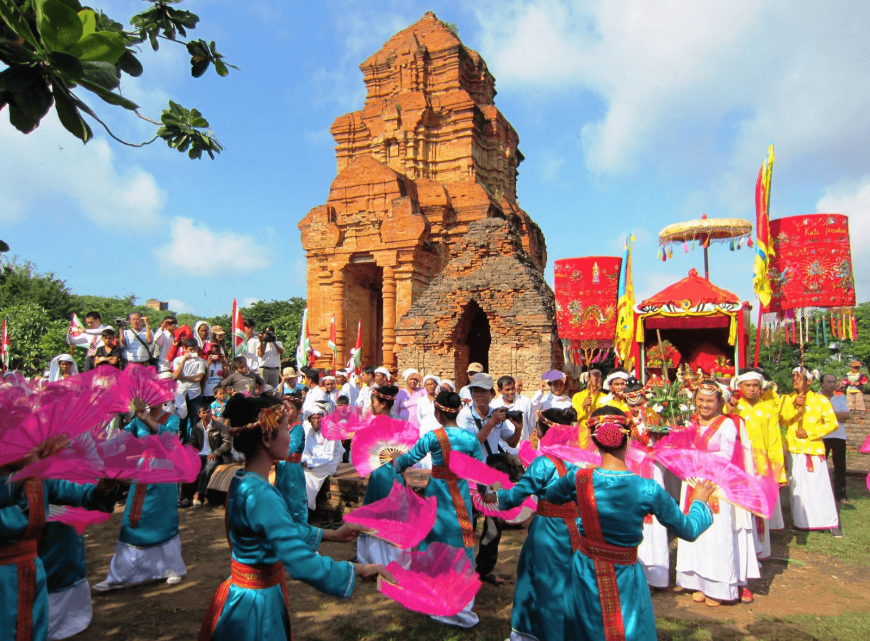
Source: Internet
Thay Thim Palace Festival
The Thay Thim Palace Festival takes place in the Tan Tien commune of La Gi town. It has been a traditional custom for more than a century. The Thay Thim Palace is named for a hermit called Thay and his wife -Thim, a kindhearted couple that used magic to help the poor and cure diseases in their local community. After their death, a temple was built to worship them and honor their memories.
Since then, the people of La Gi host a huge festival every year on the full moon of the 9th month of the lunar calendar – the death anniversary of the couple. Locals pray, cultural, sports and tourism activities are associated with the characteristics of the sea such as carrying baskets to the sea, carrying fish, tugging, human chess, etc. take place to celebrate the event.
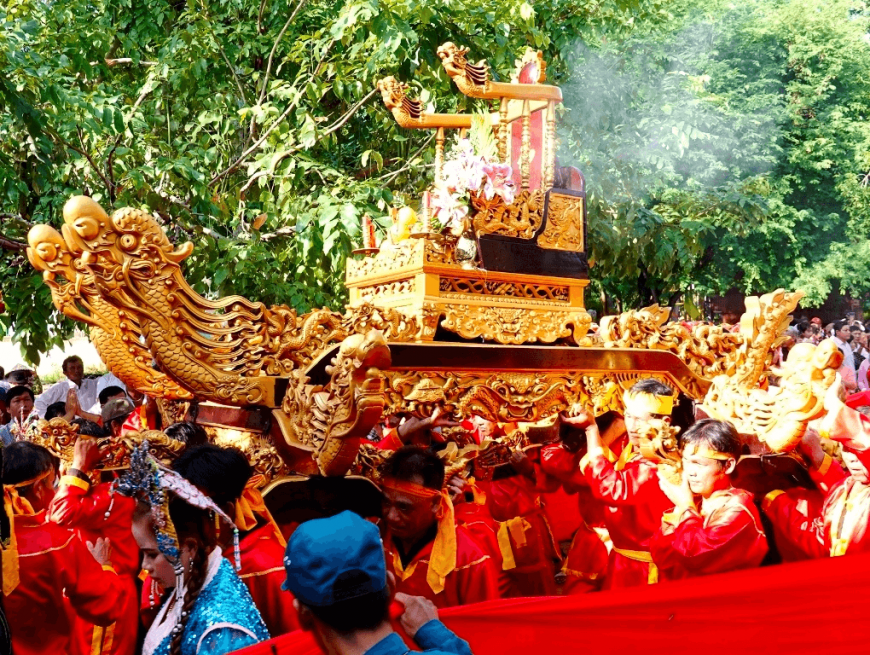
Source: Internet
Whale Worship Festival
The culture of fishermen in Binh Thuan is quite a serious thing. Whales are revered as gods and said to bestow fortune and peace upon the region. When one of these great and sacred beasts dies, it is covered with red cloth as a sign of respect before being buried at sea with an offering of incense and food.
The Cau Ngu Festival is for whale worship. It takes place in Van Thuy Tu, one of the oldest fishing villages in central Vietnam. The temple in the village is the largest whale skeleton museum in all of Southeast Asia. Hundreds of whale skeletons have been buried here over hundreds of years. Vietnam’s largest whale skeleton, 22 metres in length and weighing 64 tonnes, is being preserved at Van Thuy Tu temple.
The annual festival is observed to pay tribute to the whale gods, asking them to keep fishermen safe and bestow a bountiful catch. Ritual sacrifices are made, folk songs and dances and games are held, and a sailing regatta is launched.

